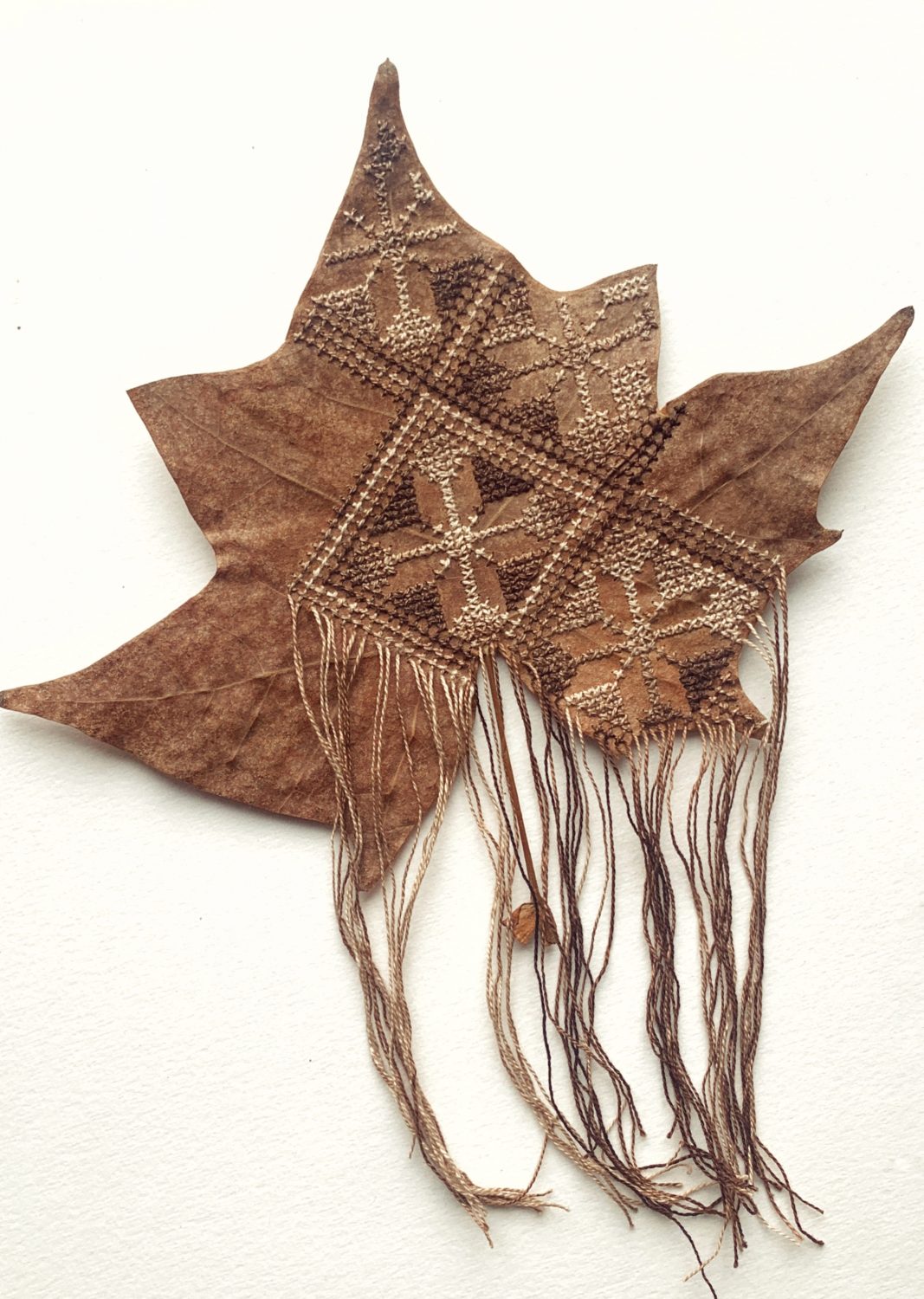
Welcome back to NeedlePoints of View, a monthly column brought to you by Emma of The Maker’s Marks and Hannelore of Hedgehog Needlepoint, where we’ll be sharing our love of all things needlepoint. Whether you’re new to the craft and want to learn what it’s all about or you’ve already fallen under needlepoint’s spell, we hope to inspire you to pick up a needle and get stitching.
Today we’ll be taking a whistlestop Q&A tour of the history of needlepoint, to find out how just one stitch grew into the rich and varied craft that it is today.
Where does needlepoint originate from?
These days, there are so many beautiful stitches to choose from but, way back when the most commonly used stitch was tent stitch and it looks just like a forward slash or a half cross-stitch. Believe it or not, these stitches were first found in Ancient Egypt in 1500BC!
The Ancient Egyptians used them to sew the sides of their canvas tents. Even now, over 3 thousand years later, this stitch is still known as a tent stitch. It remains a popular choice amongst needlepointers and it’s probably the first stitch most of us learn.
What do Needlepoint, Canvaswork, and Tapestry all have in common?
They’re different names for exactly the same thing; sewing with wool into a canvas mesh fabric. Whether you call it needlepoint, tapestry, or canvaswork, when it boils down to it that’s all needlepoint really is. There are a lot of variations and types of needlepoint and over time it has had many names, some of which we’ll get to in a bit.
Back in the 1600s, needlepoint was known as canvaswork and the designs were worked entirely in tent stitches. Most of these designs were petit point, and having an excellent eye was key because the designs were worked in 20-45 stitches per linear inch! By contrast, most modern designs are 7-18 stitches per linear inch, meaning they work up a lot quicker and, unlike your 16th Century counterparts, you probably won’t need a monocle to stitch them.
Nowadays, we take great pleasure in the celebrities who take up the needle and thread, like Rosey Grier and Dame Judi Dench’s subversive embroidery habit, and history has also seen its fair share of iconic needlepointers.
In the 16th Century, Mary, Queen of Scots spent her years of incarceration needlepointing. Not only did stitching help her do the time, but it was also a means of resistance. She incorporated covert symbols and imagery into the designs she stitched and gave them as gifts to friends, supporters, and even to her imprisoner and cousin, Queen Elizabeth I.
When did needlepoint become popular?
During the 17th Century, a more durable needlepoint fabric was developed and Bargello was born. Bargello uses straight stitches laid out in a mathematical pattern to create geometric motifs and, combined with the new hard-wearing canvas, it became a popular choice for home decor, upholstery projects, and even shoes!
By the 18th Century, needlepoint’s popularity landed it a place in American girls’ education and created a surge of haberdasheries opening up all over Europe to stock supplies and kits. Kits back then were much as they are today, consisting of a designed canvas and all the materials needed to complete it.

Better Dyes, Brighter Needlepoint Designs
In the 19th Century, the term ‘canvas work’ fell out of vogue, its new name was needlepoint, and Berlin Wool Work exploded onto the scene!
These stunning new designs incorporated a vivid array of colours never seen before and were hand-painted onto grid paper. This was made possible by the century’s advancements in dying techniques. Especially aniline dyes which produced brightly coloured yarns, perfect for depicting the floral and pastoral scenes popular at the time.
The History of Needlepoint: To Be Continued…
Thank you for joining me on this whistlestop tour of the history of needlepoint. So far we’ve covered needlepoint’s humble beginnings in Ancient Egypt right up to the Victoria Era. Next month Emma will be back to share how the craft developed in the hands of the extravagant Edwardians right up to the contemporary needlepoint designs we see today. We’ll look forward to seeing you back here for that next month.
If you can’t wait to get stitching, sign up for the Sewing with Bobbin and Fred newsletter and download your free copy of the Turkish Jewel Needlebook, a stunning geometric needlepoint design stitched with stranded cotton.






